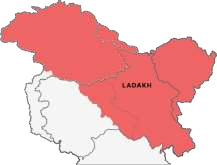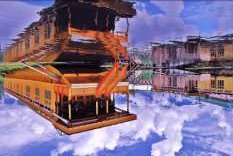Class 5 EVS Chapter 13 Summary Notes PDF Download
FAQs on A Shelter So High Class 5 EVS Chapter 13 CBSE Notes - 2025-26
1. Why are houses in mountainous areas like Leh different from those in cities like Mumbai as shown in Chapter 13?
Houses in different regions are built to suit the local climate. In Mumbai, a coastal city with high rainfall, houses are made of cement and brick to withstand moisture. In Leh, a high-altitude cold desert, houses have thick stone and mud walls with wooden floors to provide insulation and protect residents from extreme cold and snowfall.
2. What are the key concepts to summarise from the notes on 'A Shelter So High'?
For a quick revision of this chapter, you should focus on these key concepts:
- The different types of shelters encountered on a journey from a bustling city to a high-altitude region.
- The unique lifestyle and challenges of the Changpa nomadic tribe.
- The construction and purpose of special shelters like the 'Rebo' (tent) and houses in Leh.
- The relationship between the Changpa people and their animals, especially the goats that provide Pashmina wool.
3. What does it mean to live a nomadic life like the Changpa tribe?
Living a nomadic life, as the Changpa tribe does, means not having a permanent home in one place. They move with all their belongings and livestock, like sheep and goats, across the vast plains of Changthang in search of fresh pastures for their animals to graze. Their home, a special tent called a 'Rebo', is portable and can be set up wherever they camp.
4. What is a 'Rebo' and what makes it a suitable shelter for the Changpas?
A 'Rebo' is the cone-shaped tent used by the Changpa nomads as their home. It is made from strips of woven yak hair, which are stitched together. This material is incredibly strong and warm, providing excellent protection against the harsh, cold winds of the mountains. Its design is simple to pack and set up, making it perfect for a mobile lifestyle.
5. What is the significance of a 'Lekha' in the life of the Changpa people?
A 'Lekha' is a place near the 'Rebo' where the Changpas keep their precious sheep and goats. It is an enclosure with walls made of stones. The 'Lekha' is extremely important because it protects their livestock—their main source of wealth and livelihood—from wild animals and the freezing cold at night. Each family has their own 'Lekha'.
6. Why are the ground floors of houses in Leh often built without windows and used for animals?
This unique architectural feature is a clever adaptation to the severe winter climate. The ground floor is used to house animals and store essential supplies. The body heat from the animals helps to keep the floor of the upper level warm, where the family lives. Building the ground floor with no windows minimises heat loss, thus acting as a natural insulator for the entire house.
7. How do the special goats of the Changthang region contribute to the Changpa economy?
The Changpa people rear special goats that grow an extremely soft and fine undercoat of fur to survive the cold. This fur is collected to produce the world-famous and expensive Pashmina wool. Weavers in Srinagar buy this wool to make Pashmina shawls. Selling this precious wool is the primary source of income for the Changpa tribe, making their goats their greatest treasure.
8. What can we learn about human adaptation from the different shelters described in the chapter?
The chapter teaches us that humans are incredibly resourceful and can adapt their shelters to survive in diverse and challenging environments. Whether it is building multi-storey stone houses in Leh for warmth, living in mobile 'Rebo' tents in Changthang to follow herds, or residing in houseboats in Srinagar, people use local materials and knowledge to create homes that best suit the climate and their way of life.
























